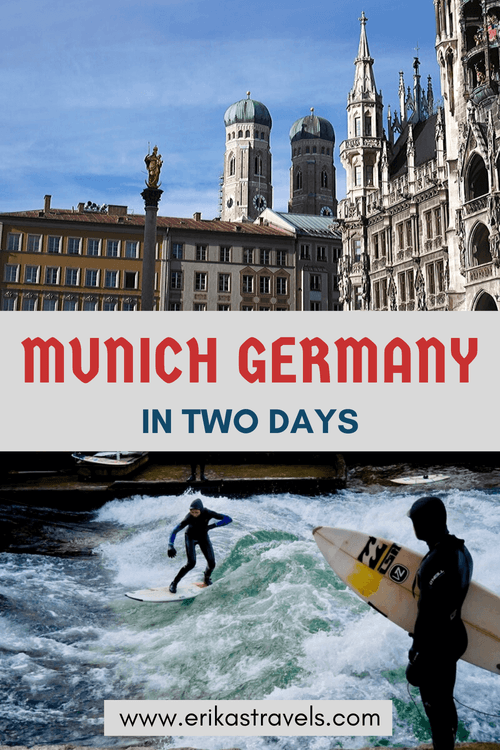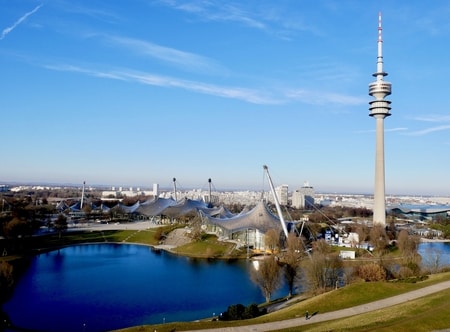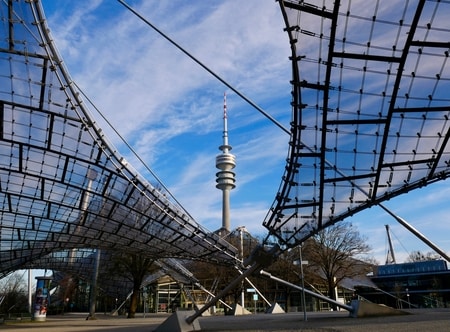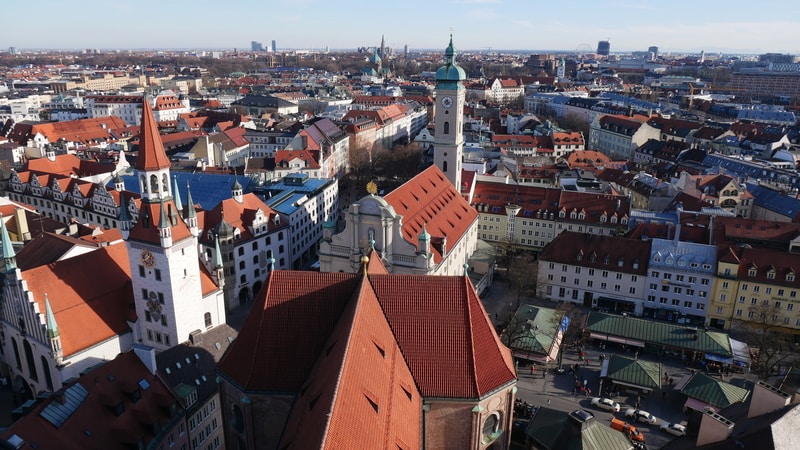
Two Days in Munich: The Capital of Bavaria
Munich is a large city with a small-town feel. Boasting compact walkable streets and easy access to nature, it is at once modest in its aesthetics and outsized in its historical and cultural influence.
A land of lederhosen, dirndls, and flowing steins of beer, it lies at the heart of German culture and tradition.
Until 1871, Munich was the capital of an independent Bavaria. The city’s imperial palaces and Neoclassical buildings act as a reminder of Munich’s historical and cultural relevance. Meanwhile, just down the road in the suburb of Dachau, lie harrowing reminders of Germany’s Nazi past.
Munich’s renown as the birthplace of Nazism gives the city a dark and complex history.
And yet, today, Munich is a delightful metropolis with plenty to see and do—whether you’re interested in history, culture, art, or sport.
TWO DAY MUNICH ITINERARY
Dan and I spent two days in Munich on a January stopover between Cairo and the United States. Following nearly a month in Egypt, we found Munich to be a bit of a culture shock. The Bavarian city is everything Cairo is not. It is efficient, organized, functional, and orderly. It is the epitome of what I remembered Germany to be like.
While in Munich, Dan and I stayed at the Holiday Inn Stadcentrum. The accommodation offered us exceptional value for money, especially considering its heavily discounted price on booking.com. Our hotel’s central location—just a short walk from Marienplatz and two blocks from the Rosenheimer Platz metro station—ensured that we were perfectly positioned to enjoy our two days in Munich.
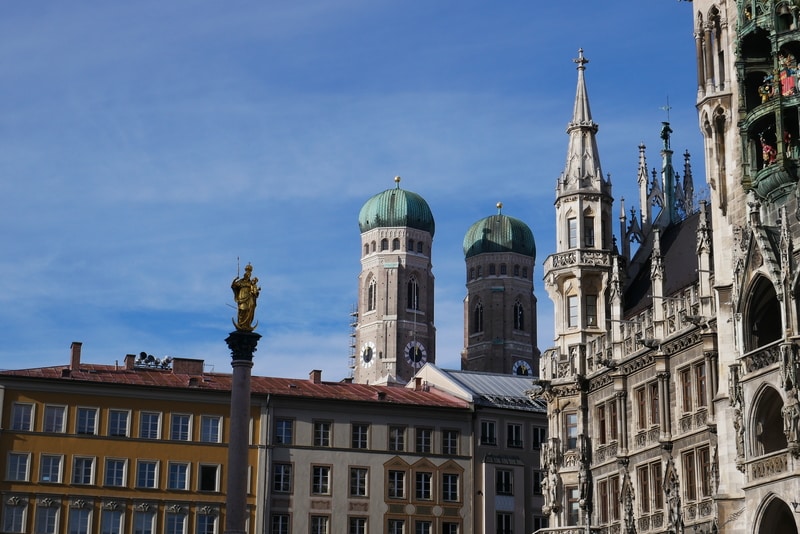
With only two days in Munich, Dan and I had to prioritize the city’s top attractions. We spent the first day getting familiar with the general layout of the city, its parks, and its historic downtown. On the second day, we chose to take a train to the nearby village of Dachau, for a sobering visit to one of Europe’s most notorious concentration camps.
Visiting Dachau is a matter of personal choice. Travelers who choose to skip it can find many other things to do in Munich—including art museums, palaces, cathedrals, and breweries.
MUNICH DAY 1: THE ESSENTIALS
On our first day in Munich, Dan and I explored the city’s central parks and old town.
After World War II, Munich’s city leaders took care to preserve the city’s original street plan and re-create the medieval steeples, Neo-Gothic façades, and Neoclassical buildings present in the city center. They blocked off the city’s downtown to cars, built a subway system, and opened up pedestrian-only streets.
Many of the top things to do in Munich are centered around Alstadt, the city’s compact and walkable core.
MARIENPLATZ
Alstadt is the oldest part of Munich and the location of the city’s most comprehensive collection of historic buildings. At its center lies Marienplatz—the undeniable heart of Munich and a logical first stop on city itineraries.
Marienplatz was founded in the 12th century by Henry the Lion, Duke of Bavaria. Marienplatz’s centerpiece is the impressive Neues Rathaus (New Town Hall). It is a 300-foot-long, elaborately decorated façade with hundreds of statues, turrets and arches that dominate the square.
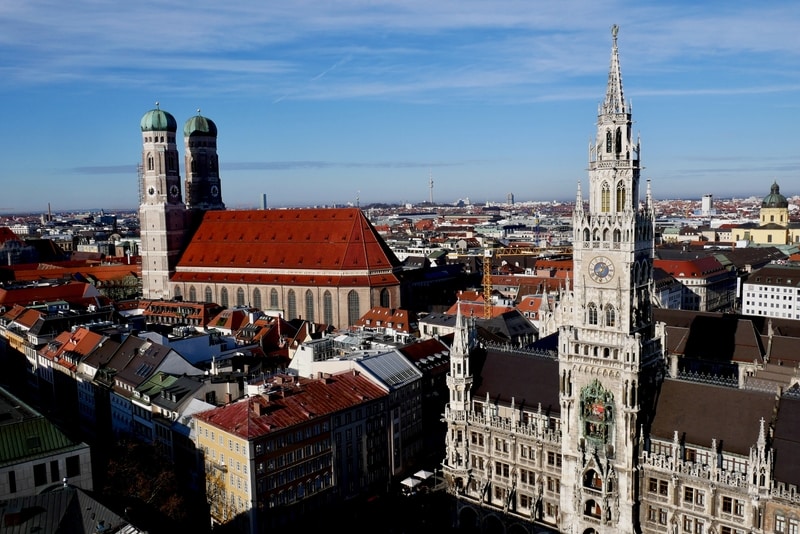
The tower of the Neues Rathaus displays the Rathaus-Glockenspiel. Each day at 11 am and noon, hundreds of people gather in front of the tower to watch the 32 life-sized figures reenact historical Bavarian events.
Though I’d seen the clock show on a childhood trip to Munich in 2003, Dan and I narrowly missed the spectacle during our two days in Munich. Based on erroneous information we had read online, we decided to hold out for an evening showing. As it turns out, however, additional 5 o’clock showings are only limited to summer months.
ST PETER’S CHURCH BELLTOWER
For excellent aerial views of Munich’s historical core, we chose to climb the St Peter’s Church Bell Tower. From its viewing platforms, we had unparalleled views of Marienplatz, the Frauenkirche’s twin steeples, the city’s extensive gardens, and the Bavarian Alps in the distance.
The St Peterskirche’s bell tower staircase consists of 306 steps, and costs €3 to climb. It offers the best panoramas of central Munich
VIKTUALIENMARKT
Around the corner from Marienplatz, the Viktualienmarkt is a wonderful place to grab a quick bite to eat and revel in Munich’s small town charm.
The Viktualienmarkt contains 140 stalls offering flowers, fruit, meats, spices, cheeses, and pre-made fare.
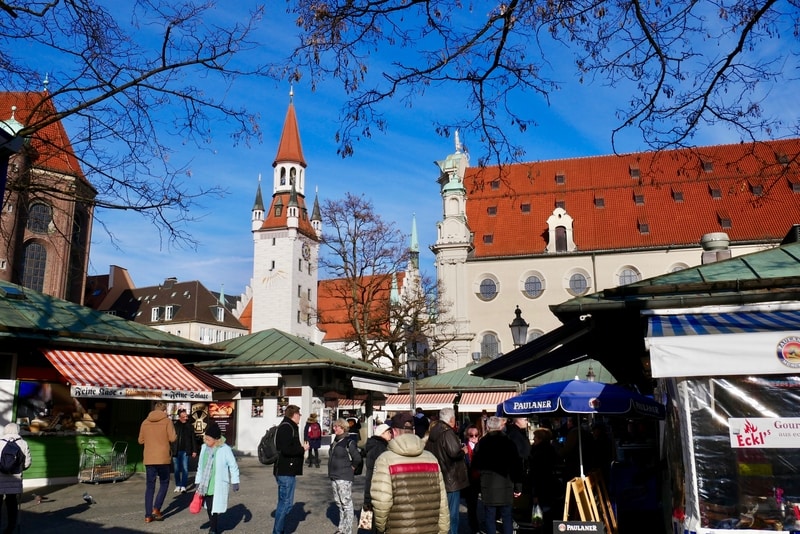
Like an open air gourmet food hall, it is delicious place to grab a quick bite during a busy day of sightseeing.
THE MUNICH HOFGARTEN
Though diminutive in comparison with Munich’s larger parks and gardens, the Munich Hofgarten is remarkable for being at the center of some of Bavaria’s most notable architecture. The Hofgarten is an Italian Renaissance Garden that centers around a small pavilion. At its east end, lies the imposing Bavarian State Chancellery. Flanking its southern side is the Residenz—Germany’s largest residential palace.
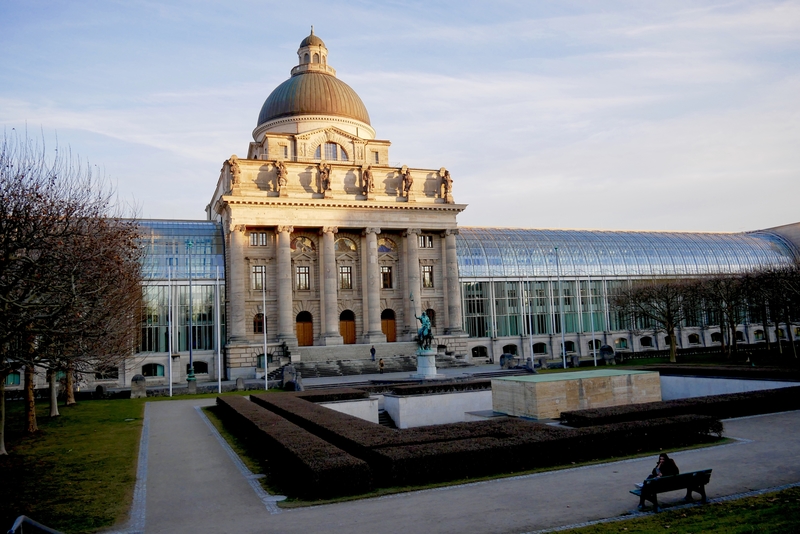
From the Munich Hofgarten, a strip of greenery extends outward, toward the Englischer Garten. Had we only had one day in Munich, we would have likely continued our itinerary with a pre-dinner stroll through the city’s sprawling park.
Since we had time to explore the city at a more leisurely pace, however, we escaped the chilly winter weather and warmed up with a stein of beer at the legendary Hofbrauhaus.
THE MUNICH HOFBRAUHAUS
Beer has been part of Munich life for at least seven centuries, and the brewing tradition is very much alive and kicking today. The Bavarian capital boasts six prominent breweries that pump out world-class suds to thousands of restaurants and beer halls around Germany and beyond.
The king of them all is Hofbrauhaus. No trip to Munich would be complete without throwing back a stein at the iconic watering hole that has gained international renown.
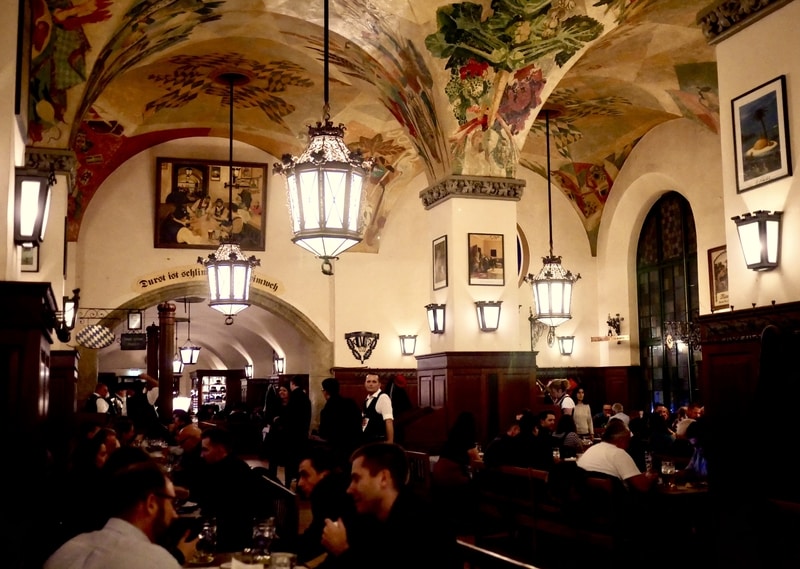
In truth, I wouldn’t exactly say that the Hofbrauhaus presents visitors with a true Bavarian experience (the clientele is almost exclusively made up of foreign tourists). Nor did we find the food at the Hofbrauhaus to be anything out of the ordinary (we were much more satisfied with our dinner at the the Schneider Brauhaus around the corner).
Still, the Hofbrauhaus is a tourist staple that should not be missed when visiting Munich. With its oversized beer steins, its lederhosen-clad wait staff, and its healthy portions of spaetzel, schnitzel and bratwurst sausages, it represents every Bavarian stereotype rolled into one.
MUNICH DAY 2 ITINERARY
While we spent our first day in Munich enjoying the city’s vibrant historical core and its popular watering holes, our second day in Munich reminded us of Germany’s complex recent past. Sure, the city is now among the most livable in the world, but it hasn’t always been this way for everyone.
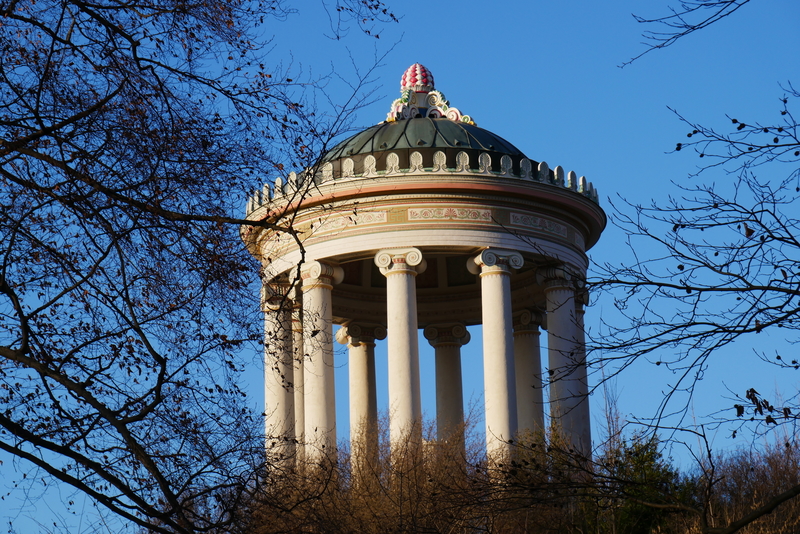
Between 1933-1945, the Dachau Concentration Camp near Munich claimed the lives of tens of thousands of Jews, homosexuals, Gypsies, and political opponents to Nazism. The site is now a somber memorial to the millions of innocent lives lost during the Holocaust.
On the morning of our second day in Germany, we delved into the dark side of Bavarian 20th century history with a visit to the notorious concentration camp.
Afterwards, we spent an afternoon reflecting and decompressing in Munich’s extensive urban gardens.
MORNING AT DACHAU CONCENTRATION CAMP
Visiting the Dachau Concentration Camp is one of the most popular day trips from Munich. While the camp technically lies outside of Munich, the site’s easy access to the city makes it a worthwhile inclusion when visiting Bavaria’s capital.
In the early years of Germany’s Nazi reign, Dachau was the largest and most well-known death camp in the world. Later, it became a model for other notorious extermination camps such as Auschwitz-Birkenau and Treblinka.
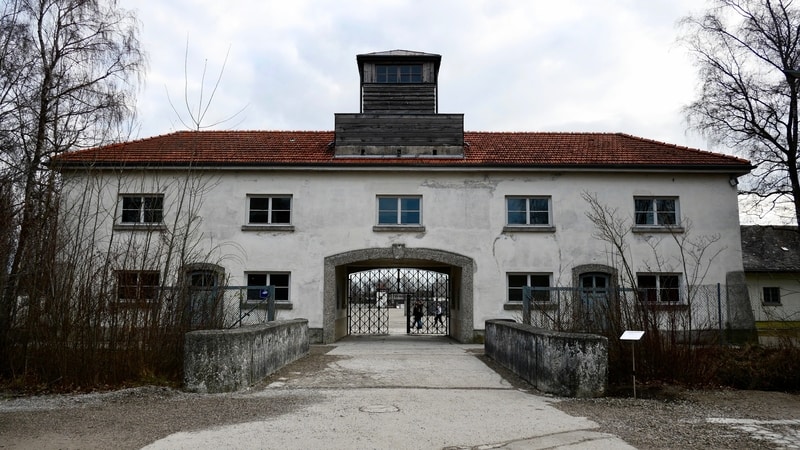
Tourists to Dachau can walk the grounds of the camp and visit the crematorium. The site’s excellent museum gives a chronological history of the concentration camp’s various uses during the Nazi regime.
The Dachau Memorial is free to visit. The site offers guided tours in English at 11 am and 1 pm every day. These tours last roughly two and a half hours and cost €3.50 per person.
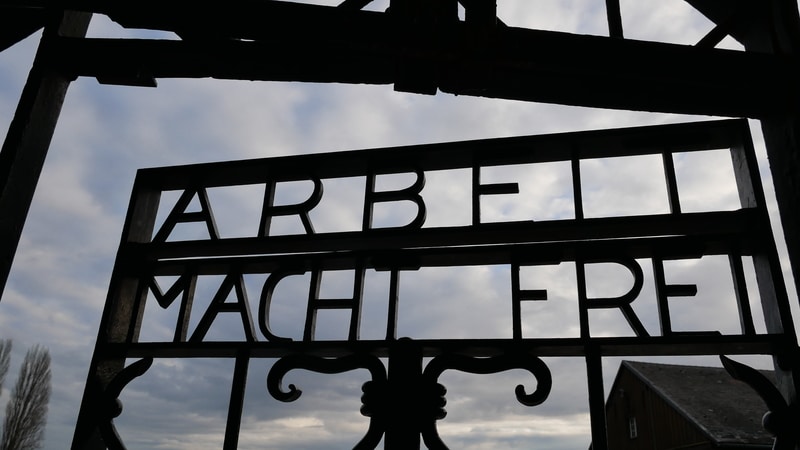
Since Dan and I arrived at Dachau well before the start of the first tour, we chose to rent audioguides for €4 apiece instead. The informative audioguides were excellent and provided us with moving stories from Dachau’s Holocaust survivors.
DACHAU ALTERNATIVES
Touring Dachau during our two days in Munich was both informative and worthwhile. In many ways, it reminded me of visiting the Killing Fields in Phnom Penh, or the slave castles in Ghana. However, spending time at Dachau is 100% a personal choice. And I fully understand that many travelers might want their Munich vacations to omit visiting a place of incomprehensible cruelty and torture.
For travelers wishing to skip a visit to Dachau, there are plenty of museums in Munich that my online research suggests are worth visiting. Had we not chosen to take a half-day trip to Dachau, we would have likely spent the morning at the Nymphenburg Palace, or at one of the city’s three Pinakothek Museums.
OLYMPIAPARK
Though Munich has plenty of palaces and museums to keep travelers entertained for two days, Dan and I chose to spend the afternoon of our second day in Munich enjoying some of the city’s most wonderful assets: its parks.
From Dachau, we took a train back to Marienplatz, grabbed a bite to eat at Viktualienmarkt, then took the metro to Olympiapark for a stroll around the 1972 Olympics complex.
Olympiapark’s two famous landmarks are a 290m tower, and a warped athletic stadium.
On clear sunny days, breathtaking views of Munich and the Alps extend in all directions from the Olympic Hill at the center of the park.
ENGLISCHER GARTEN
After strolling around the Olympiapark and soaking in the views from its grassy hilltop, Dan and I chose to spend the remainder of our day in the sprawling and wonderful Englischer Garten.
The Englischer Garten—one of the world’s best city parks—takes up 3.7 square kilometer’s of Munich’s urban landscape.
The park contains a Chinese pavilion, a Japanese teahouse, an artificial lake, an open air amphitheater, and miles upon miles of walking paths.
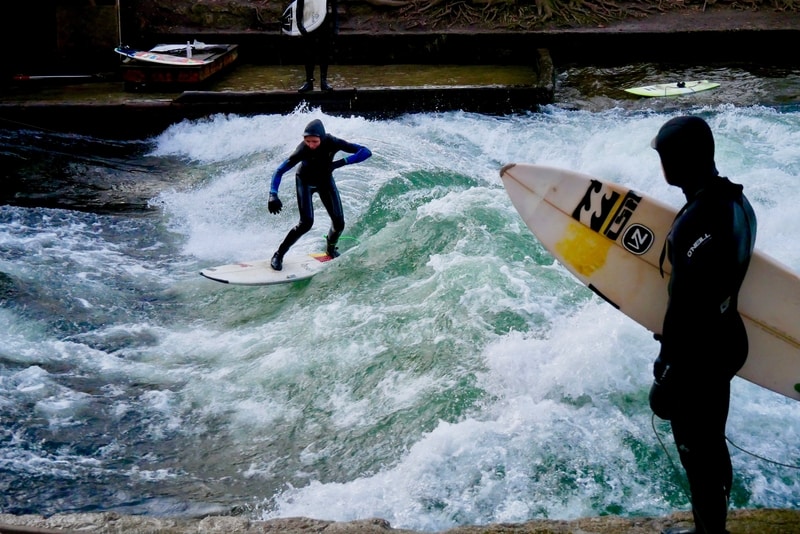
It even offers the opportunity to participate in urban surfing at the Eisbach—a small channel that has become a magnet for surfers, no matter the weather.
****
Munich merits more than just a passing glance. Like other great European cities, the Bavarian capital is ripe with things to do and places to visit.
As Dan and I walked through Munich, we found it easy to understand why the Bavarian capital is consistently voted one of Germany’s most livable cities.
For beer lovers, there no place quite like Munich.
And for everyone else, the city offers a generous smattering of ornate cathedrals, stately palaces, pedestrian shopping malls, and sprawling parks.
_____________________________
Was this Two Day Munich Itinerary Useful? Pin It!
